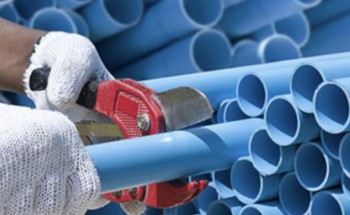Top 10 Biggest And Most Majestic Hydroelectric Plants In Canada
| Table of Contents |
An Overview of Hydroelectric Power In Canada
In terms of installed capacity, Canada is the fourth-largest hydropower producer in the world and the top producer of hydroelectricity in North America.
An important pillar of the Canadian economy is the production of hydroelectric power, which is largely exported to the United States. According to projections, the sector's expansion will result in the creation of at least a million jobs over the next 20 years.
Given that they harness nearly 95% of the energy contained in the water, Canadian hydroelectric power plants are among the most effective in the world.
Hydropower powers six out of ten homes and businesses in Canada, according to the government.
The 1,100 MW Site C project in British Columbia, the 824 MW Muskrat Falls project in Labrador, the 695 MW Keeyask project in Manitoba, and the 245 MW La Romaine 4 project in Québec are examples of significant hydropower projects that are currently under construction or have recently been finished.
More than 94% of the electricity produced at the moment in six Canadian provinces and territories comes from renewable sources. Through the expansion of clean electricity trade between provinces and territories, our economy, employment opportunities, and environmental protection are all boosted.
Top 10 Largest and Most Majestic Hydroelectric Power Plants In Canada
1. Centrale Robert-Bourassa
 |
| Centrale Robert-Bourassa - Largest Hydroelectric Power Plants In Canada |
Location: James Bay, Quebec
Construction to opening: 1974 to 1981
Cost: $3.8 billion
Annual production: 26,500 gigawatt hours
Owner: Hydro-Quebéc
The 7,722-MW Robert-Bourassa hydroelectric generating station is located on the La Grande River in northern Quebec. At 162 metres high and 2,835 metres wide, it is Canada’s largest hydro project, the world’s ninth largest hydro project, and the world’s largest underground generating station at 137 metres below ground.
The project’s 53-storey dam was constructed in James Bay, and its iconic spillway is channels 17,600 cubic metres per second structure down 10 gigantic concrete steps, each the size of two football fields. This design, nicknamed “the giant’s staircase,” slows the water and prevents erosion. The reservoir covers an area of 2,815 square kilometres and contains 61 billion cubic metres of water, meaning each inhabitant on Earth could draw 10,000 litres of water before it ran dry.
The generating station is equipped with a surge chamber—a gigantic underground chamber that acts as a shock absorber for the dramatic variations in pressure that occur when the turbines are started up or shut down. Water rises in the chamber rather than surging back toward the turbines and damaging them.
2. Churchill Falls, Canada
Location: Newfoundland and Labrador
Construction to opening: 1967 to 1974
Cost: $946 million
Annual Production: 35,000 gigawatt hours
Owner: Hydro-Quebéc and Nalcor Energy
The 5,428-MW Churchill Falls generating station on the Churchill River in Newfoundland and Labrador is the second largest hydroelectric power plant in Canada and the 10th largest in the world. It is owned by Churchill Falls Labrador Corporation—a joint venture between Hydro-Quebec and Nalcor Energy.
The hydropower station’s reservoir is contained behind 88 rock-filled dikes rather than a dam, and its underground powerhouse consists of 11 Francis turbines, each rated at 493.5 MW.
This project’s claim to fame is its underground machine house—its scale is enormous and at the time of its construction, it was the world’s largest. The underground structure was hollowed out of solid granite 305 metres under the earth. It is three times as long as a football field and is as tall as a 15-storey building. It is held together with 11,000 11- to 25-foot-long steel rock bolts, which strengthen its structural integrity. The Churchill Falls reservoir—named Smallwood Reservoir after Newfoundland’s first premier—covers 5,698 square kilometres. Its water begins at Ashuanipi Lake and drops over 305 metres before entering the power plant.
It took 6,300 workers five years non-stop to construct the Churchill Falls project, and their hard work paid off when the first two generation units delivered power five months and three weeks ahead of schedule.
3. La Grande-2A, -3 and -4
Location: James Bay, Quebec
Construction and opening: 1974 to 1986
Cost: just under $20 billion
Annual Production: 2,106 MW for 2A; 2,417 MW for 3; 2,779 MW for 4
Owner: Hydro-Quebéc
James Bay is home to 11 hydroelectric projects, including La Grande-2A, -3 and -4, the largest of the group. The La Grande projects are constructed on the Grand River in northwestern Quebec and divert waters from neighbouring rivers into the projects' watershed. Covering a combined area the size of New York State, the James Bay Project has a combined 16,527-MW capacity.
La Grande-4 is Canada’s third largest hydroelectric project. The dam stands 125 metres high, spans 3,800 metres and has a spillway capacity of 7,335 cubic metres per second. The spillways at La Grande-3 and -4 have a curved, ski-jump design with an upward lip that projects the jet of water dozens of metres into the air. This dissipates part of the water’s energy and prevents structural damage.
4. WAC Bennett Dam
Location: Hudson’s Hope, B.C.
Construction to opening: 1963 to 1968
Cost: $750 million
Installed capacity: 2,876 MW
Owner: BC Hydro
At 183 metres high, the WAC Bennet Dam on the Peace River is one of the world’s highest earth-filled dams. It spans 2,068 metres to create Williston Lake, Canada’s third largest artificial lake.
In the 1950s, Ray Williston, minister of land and forests at the time, proposed creating the “Power Trench” by turning sections of the Peace and Columbia river basins into sources of power generation. In 1957, an area 22 kilometres west of Hudson’s Hope was selected from 12 possible sites at which to build the dam. The resulting Gordon M. Shrum generating station, named after the physics professor who completed the economic study of the project and later became the head of BC Hydro, is located 150 metres below ground and houses 10 generating units.
5. Revelstoke Dam
Location: Revelstoke, B.C.
Opening: 1984
Installed capacity: 2,876 MW
Owner: BC Hydro
The Revelstoke Dam, also called the Revelstoke Canyon Dam, spans the Columba River five kilometers north of Revelstoke, British Columbia. It is a component of a hydroelectricity complex that also consists of a powerhouse in the riverbed, a 122-meter-high earthfill dam on the west bank, and a 175-meter concrete gravity dam in Little Dalles Canyon. The powerhouse is home to five generating units, each with a 460,750 kilowatt capacity.
The dam builds a 130-kilometer reservoir that reaches the Mica Dam's tailwaters. Nearly three-quarters of the water entering the reservoir is from Mica's regulated release, making Revelstoke's power plant a run-of-the-river operation with typical maximum fluctuations in reservoir level of 4.5 meters.
If demand warrants it, BC Hydro may add a sixth generating unit in 2020, which, once completed, would add an additional 500 MW of reliable capacity.
6. Beauharnois
Location: Beauharnois, Quebec
Construction to opening: 1930 to 1961
Annual capacity: 1,911 MW
Owner: Hydro-Québec
Constructed over a 30-year period, the Beauharnois Hydroelectric Power Station is located on the Saint Lawrence Seaway on the Saint Lawrence River in Quebec. It is just 45 minutes from Montreal and demonstrates exceptional design and signature Art Deco architecture that earned it a place as a National Historic Site. Beauharnois’ 38 generating units spread out over one kilometre make it Hydro-Québec’s most powerful run-of-river project.
The dam’s early history is riddled with political scandal. In what some call the most famous example of political bribery of the time, the Beauharnois Light, Heat, and Power Company gifted the federal Liberal party with $700,000 leading up to the 1930 election in exchange for the right to change the flow of the St. Lawrence River with the station’s construction. The scandal and its repercussions eventually led to the nationalization of the utility company and the establishment of Hydro-Québec.
7. Daniel-Johnson Dam (formerly Manic-5)
Location: Manicouagan regional county municipality, Quebec
Construction to opening: 1959 to 1970
Installed capacity: 1,596 MW (2,596 MW combined with Manic-5 PA)
Owner: Hydro-Québec
The Daniel-Johnson Dam comprises 14 buttresses and 13 arches stretching across the Manicouagan River to create the Manicouagan Reservoir. The dam supplies water to the Manic-5 and Manic-5 PA power houses, with a combined capacity of 2,596 MW. At 214 metres tall and 1,314 metres long and containing 2,200,000 cubic metres of concrete, it is the largest dam of its type in the world.
The dam’s design was chosen for its economy and strength—it uses less concrete or material than a gravity or embankment dam, and its concrete composition was selected to withstand constant freezing and thawing of its environment. Of its 14 buttresses, the two forming the centre arch are 162 metres apart, and at its thickest point, the dam is 22.5 metres wide. The dam’s arches absorb pressure from the water behind the dam and transfer it to the buttresses and then the foundation.
In 2005, a Radio-Canada television crew entered the Manic-5 PA and Robert Bourassa power houses and took footage that led to the resignation of Hydro-Québec CEO and chairman of the board two months later. Since then, cameras are forbidden in these areas.
8. Sir Adam Beck II Generating Station
Location: Niagara Falls, Ontario
Opening: 1954
Installed capacity: 1,499 MW
Owner: Ontario Power generation
The Sir Adam Beck Generating Stations (I and II) are named after Adam Beck, politician, hydro advocate and founder of the Hydro-Electric Power Commission of Ontario. The dams divert water from the Niagara and Welland rivers above Niagara Falls to produce up to 1,997 MW combined. Sir Adam Beck I first produced energy in 1922, and currently runs 10 generators. It was renamed Adam Beck from Queenston-Chippewa Hydroelectric Plant in 1950 to commemorate 25 years since Adam Beck’s death.
Adam Beck II first generated electricity in 1954, when water was diverted via two eight-kilometre tunnels running under the city of Niagara Falls. The project underwent a significant civil engineering upgrade between 2003 and 2013 and currently uses a new 12.7-metre-diametre, 10.2-kilometre-long tunnel to divert water to 16 generators. This upgrade increases the complex’s capacity by 150 MW, which can power about 160,000 homes.
In 1965, the major Northeast Blackout of Ontario occurred because of an incorrect protective relay setting at one of the transmission lines for Adam Beck II. A series of cascading failures affected more than 30 million people for approximately 12 hours.
9. Kettle Generating Station
Location: Gillam, Manitoba
Construction to opening: 1966 to 1973
Cost: $240 million
Installed capacity: 1,220 MW
Owner: Manitoba Hydro
The Kettle Generating Station, a run-of-river power station, is located on the Lowe Nelson River in Manitoba about six kilometres northwest of Gillam. Construction was carried out is several stages: a circular cofferdam was set on the right side of the river as the power house was constructed; the river flowed through the power house while the spillway was constructed adjacent and to the left of the power house; and once the water was diverted through the spillway, the earth-filled section on the dam’s left bank was completed. By 1973, seven generators were commissioned and the station was officially opened.
The power house covers 43 per cent of the river’s 885-metre width, the spillway covers 22 per cent in the centre of the dam, and the earth-filled structure covers the 35 per cent in length. Eight floodgates on the spillway can discharge water at a rate of up to 8,349 cubic metres per second. Twelve 102-MW propeller turbine generators are housed in the power house, with each turbine discharging up to 270 cubic metres per second.
10. Keeyask Generating Station
Location: Northern Manitoba
Construction to opening: 2014 to 2019
Cost: $6.5 billion
Installed capacity: 695 MW
Owner: Manitoba Hydro
The Keeyask Hydropower Limited Partnership (KHLP) is a partnership between Manitoba Hydro and four First Nations: the Tataskweyak Cree Nation, the War Lake First Nation, the York Factory First Nation, and the Fox Lake Cree Nation.
The project is expected to generate 4,400 GW hours of electricity annually on average and is situated 725 kilometers northeast of Winnipeg on the lower Nelson River. An impervious core with granular, crushed rock filters and outer rockfill shells will be the foundation for the north, central, and south dams, which will be built through the Gull Rapids and founded on bedrock. The spillway is designed as a seven-bay concrete overflow with motorized vertical lift gates. The spillway will be covered by a bridge for a long-term road, and while it is being built, it will function as an overflow discharge channel and diversion channel.
The goal is to have all units operational by 2020, with the first generator unit going into service in 2019.
 Top 7 Weirdest Foods in Canada You Must Try Top 7 Weirdest Foods in Canada You Must Try Dishes are the way for us to expose to different cultures in the country you’re visiting. KnowInsider.com will suggest a list of top 7 weirdest ... |
 Top 9 Craziest Things in Canada You Should Know Top 9 Craziest Things in Canada You Should Know Canada, the vast land in the northern part of North America, the world's second-largest country, has some weird things that maybe you don't know. |
 9 Iconic Symbols of Canada 9 Iconic Symbols of Canada What are your expectations for a trip to Canada? Is this a country that boasts a diverse population and a history of cultural exchange? What ... |
 Top 10+Most Prestigious Dental Clinics In Canada Top 10+Most Prestigious Dental Clinics In Canada We've all had dental problems at some point in our lives. A dental clinic is the best place to ensure the health of our teeth. ... |
 Top 10+ Largest Polyvinyl Chloride (PVC) Producers and Suppliers in the US Top 10+ Largest Polyvinyl Chloride (PVC) Producers and Suppliers in the US Polyvinyl Chloride (PVC) is the third most widely manufactured synthetic polymer. The major PVC manufacturers and distributors in the US are the focus of KnowInsiders.com. |























